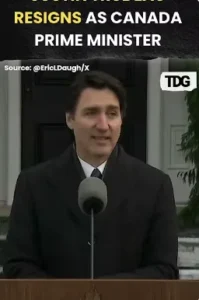Nearly a week since OpenAI, owned by Sam Altman, launched its much-anticipated image-generation function in the GPT-4o model, consumers worldwide have embraced the trend of producing beautiful images in the beloved Studio Ghibli style. The playful, dreamy drawings of the feature have captured imaginations and sparked a viral furor.
But with popularity comes pressure, and the overwhelming response has placed OpenAI’s infrastructure under significant strain.
Massive Demand Pushes GPT-4o to the Limit
OpenAI’s latest addition, which allows GPT-4o to create images in traditional Ghibli style, has shown to be a significant advance in artificial creativity. Users are pleased with the software’s capability to produce very stylized, complex, and detailed pictures. Notwithstanding, the amazing demand has overwhelmed OpenAI backend systems to cause service outages and slowed response times.
Cautioning users about possible delays and temporary feature interruptions as the business scales its activities, CEO Sam Altman frankly dealt with the matter in an X (formerly Twitter) post.
Sam Altman wrote, “We are bringing things under control, but you can expect new releases from OpenAI to be slowed down, things to break, and for service to occasionally be slow as we work through capacity issues.”
We are getting things under control, but you should expect new releases from openai to be delayed, stuff to break, and for service to sometimes be slow as we deal with capacity challenges.
— Sam Altman (@sama) April 1, 2025
Sam Altman Demands Tech Resources to Address Overload of Servers
As the issue has surged, Altman issued an open request to the tech sector, pleading for GPU capabilities to assist in handling the rising user load.
Posting, “working as fast we can to get stuff humming; if anyone has GPU capacity in 100k chunks we can get asap please call!”
working as fast we can to get stuff humming; if anyone has GPU capacity in 100k chunks we can get asap. Please call!
— Sam Altman (@sama) April 1, 2025
His desperate plea highlighted the sheer magnitude of the task. Thanks to the Ghibli-style image-generation feature, which has gone viral and is generating tens of thousands of requests each hour, OpenAI’s infrastructure is under severe strain.
Community Reaction: Praise, Frustration, and Suggestions
The popular Ghibli movie has also generated a surge of mixed responses from consumers. Though several find the creative possibilities appealing, others have expressed increasing aggravation regarding slow response times and degraded performance in other GPT-40 applications, including text generation.
“Working as quickly as we can to actually get things humming; if anyone has GPU capacity in 100k blocks that we can get as soon as possible, please call!, “What’s the problem with that?”
Another proposed a more localized release plan, “Why not release features to Pro users with rate restrictions in place of withholding changes entirely?”
Allowing free users access to the new feature, according to some users, worsened the system’s overloading.
“Honestly, that move was a bit odd. Premium users have a hard enough time getting the service to function due to server issues and really stringent filters blocking even simple prompts. And then free users were granted access too, just adding to the overloading with all of their ‘make it look like Studio Ghibli’ prompts,” wrote one commenter.
Honestly, that decision was kind of strange. Premium users are already having a hard time using the service because of server issues and super strict filters that block even simple prompts. And then free users were given access too, just adding to the overload with all their…
— Vitaliy B (@VitaliyBud) April 1, 2025
Temporary Rate Limits and Server Optimization Underway
OpenAI has implemented temporary rate limits to deal with the growing demand. Altman admitted the company GPUs were “overloaded” and assured consumers that back-end optimization projects were ongoing.
In a Sunday update, he joked, suggesting the enormous work in progress aimed at restoring equilibrium.
Though there have been technical difficulties, Altman stressed that OpenAI is intent on providing an excellent user experience and will keep refining its systems in the future to process large quantities more efficiently.
A fresh age of image creation
OpenAI is sure that GPT-4’s image-generation feature has great long-term potential even with the current growing pence. Beyond earlier models like DALL·E, which creates images incrementally, GPT-4o is marketed as the most advanced visual generator yet. This method of several stages increases reality and refines how the model deals with text and object interaction within an image.
For design, marketing, narrative, and entertainment, these enhancements transform GPT-4o from simply an entertaining tool into a game-changing resource. The company hopes its image synthesis technology will become a foundation of AI-driven creativity.
Current projects of Altman and his staff are increasing server capacity, refining response times, and installing more intelligent distribution models to highlight experience without sacrificing access.























